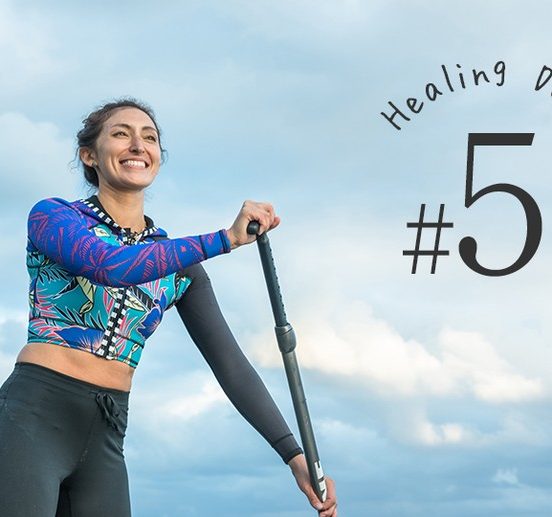MY ROOTS OKINAWA Vol.5 Ryohei Yoshida
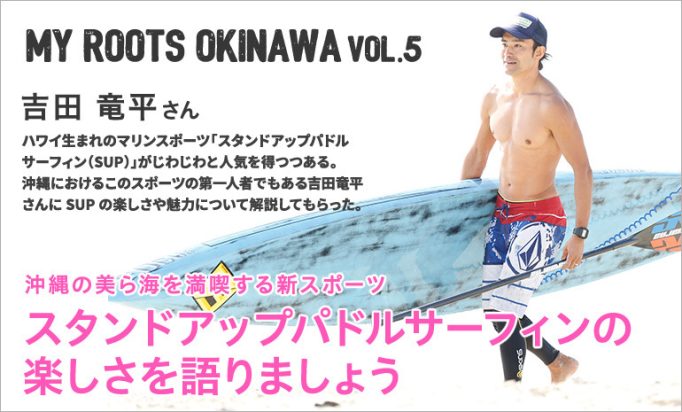
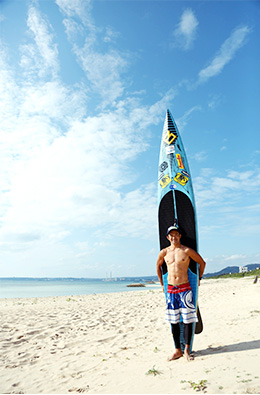
Profile
RYOHEI YOSHIDA
Born in 1981, from Yamagata Prefecture. Moved to Okinawa in 2001, currently residing in Nago City. Fell in love with SUP, and has since entered many SUP competitions and events, regularly taking top position prizes. His track record for the past five years is listed below:
2011
・Sabani Sailing Race Traditional Sabani Division
Team Kaisou Winner
2012
・Sabani Sailing Race Traditional Sabani Division
Team Kaisou Winner
2013
・Manza Koginchu CUP 3rd Place
・CARVY CUP 2nd Place
2014
・CARVY CUP 2nd Place
・Aoshima Kagura CUP 2nd Place
・Sabani Sailing Race Traditional Sabani Division
Team Kaisou Winner
・Tokushima Yoshinogawa SUP Marathon
・Elite Race 2nd Place
・Waterman league in CHIGASAKI
Overall 8th Place
2015
・Ishigakijima SUP Grand Prix Winner
・Koginchu CUP 2nd Place
・CARVY CUP Winner
What is Standup Paddle Surfing
SUP is a marine sport where you stand on a board like a surfboard and catch waves and ride along the surface of the water while paddling with a paddle (oar). Long-distance cruising is possible, and it also is said to be a full-body workout. Is apparently widely popular with people of all ages and genders in its birthplace of Hawaii.
After a long search of marine sports – an encounter with SUP
From the start, I had always wanted to work in marine sports. The only place you can do that all year round in Japan is Okinawa, so I moved here out of necessity.
After living here, I worked for 7, 8 years as a lifeguard at Manza, Zamami, and Nakijin Village. It’s true that Okinawa’s oceans are bright and warm enough to swim in all year round, and their sandy beaches and shorelines are extremely beautiful. I love that.
I got my start with SUP around 5, 6 years ago. You have always been able to enjoy marine sports such as surfing and sea kayaking in Okinawa, but at that time I was looking for a newer kind of enjoyment. Then I found out that there was this sport called SUP in Hawaii that involved having fun using your own strength, and I decided to try it in Okinawa.
These days I use my spare time to practice my SUP skills and enter competitions. SUP doesn’t put food on the table, but I do have sponsorship, so you could probably call me a semi-pro. There are some professionals in the SUP world, and I aim to be one of them
I mainly practice close to my home in Nago City at Kayo Beach and on the Teimagawa River. In particular, the Teimagawa River is rare in being able to be used for SUP, and it is a valuable asset in terms of my practice. I also sometimes go to competitions in other prefectures.

SUP is a perfect match for the Okinawan ocean
One of the features of SUP is the amazing scenery you get to see from above. With a sea kayak or canoe, you see the surrounding scenery from roughly the water level, but with SUP you see things standing up, so it looks different. The view looking down on the coral reefs is particularly impressive, and that is why I think that SUP is the marine sport most suited to Okinawa’s oceans.
Another one of the big merits of SUP is being able to go out on the open ocean. It is great having fun within the Ino (the shallow areas inside the reef with gentle waves) as if you are in a pool, but you get a feeling of elation paddling out beyond the reef to the wide open and deep ocean. It is like you are alone in the world with just the ocean, and you feel a bond with it – those times are amazing. By the way, the longest SUP race in Japan is held in Okinawa. With the qualifiers and finals combined it is more than 30 km, and in the 2015 competition we paddled in a straight line on the open ocean from Ginoza Village to the road in the middle of the ocean off Uruma City.
Okinawa’s oceans themselves are also a match for SUP. There are places with gentle waves, places with some waves, and then the open ocean, so everyone from beginners to advanced riders can enjoy themselves, and do so all year round. Incidentally, due to Okinawa’s topography and winds, waves are gentle on the western side in summer, and on the eastern side in winter. This means that you have the benefit of choosing conditions to suit your level.
https://www.youtube.com/watch?v=ENB1wSZAeo4
A sense of the origins of SUP in Okinawa
One spring when I was out on the water, an older local gentleman was pulling a small boat up onto the sand. When I asked him about it, he told me that he and his wife would go hunting for shellfish and octopi when the tide was at its lowest.
While I was watching and wondering how the boat would move forward without an engine, the old gentleman stood in the stern, and with a well-practiced motion used a bamboo pole to paddle and push off from the seabed and move the boat along. The paddling motion was just like SUP. He told me not to worry because he had been doing this for 40 years.
I was surprised to learn that people had been living fishing this way before the word SUP had even been heard of. I remember thinking I had just witnessed the origins of SUP, and being quite moved. I also remember laughing at the sight of the old gentleman’s wife, who was totally focused on her fishing and ignored him completely.
SUP is a good match for women
Women have a big advantage when it comes to SUP. While men compete by relying on their strength, women tend to use their entire body more flexibly, which makes for better exercise. Women are also generally lighter than men, so there is less of a burden on their joints. So in a certain sense you could say that SUP is a marine sport suited to women.
Of course, SUP can also be enjoyed in groups, and Okinawa has places where you can rent SUP boards, so part of the appeal lies in being able to have fun without worrying about anything more than a change of clothes.
Spring and summer are recommended for beginners, particularly May and June
In terms of the season, SUP can be enjoyed all year round, but for beginners the summertime from April to October is probably best. In particular, May and June.
This period is before it gets genuinely hot, but compared to the winter time, the water is also warm. In Okinawa it is the rainy season, but rain is a blessing for SUP, in that your body gets hot from paddling and the rain cools you down. The waves are also surprisingly mild in this season. The rain also washes the dust out of the air, which becomes cleaner after the rain and makes for more distinct scenery.
After the end of Golden Week and before the start of summer holidays, from the middle of May until July, is when it is not too crowded and easier to schedule. These days there are more LCCs, which makes it easier to casually visit Okinawa.
However, if you really want to get serious, then winter is probably better. The UV rays and sunlight are not as strong, and you don’t have to worry as much about staying hydrated, which is a concern in the summer. Winter is best if you really want to go hard.
The boards are buoyant enough to still float even with 2 or 3 adults on them, and you paddle them with a lifeline attached. So even if you fall into the ocean, so long as you can grab hold of your board, you will not drown. If you also wear a life jacket, then you should be completely safe.
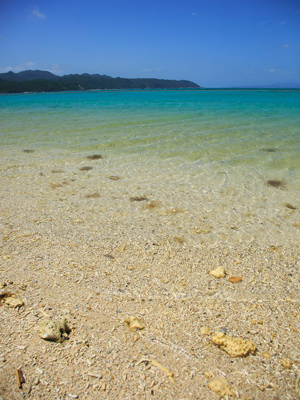
On Okinawa’s main island, head north for untouched nature
In terms of location, on the main island I would recommend heading north. There are few signs of mankind, and lots of untouched nature still around. There are also many places that are accessible from the ocean, even if you can’t get to them from the land. There are totally deserted beaches that are amazing places to camp.
Incidentally, the photos and video accompanying this article were taken on the northern part of the main island, near the beach at Igei Seaside Park in Kin Town.
For outlying islands, I would recommend the Kerama Islands. Not only are they easily accessible from Naha, the beauty and clarity of the water is world-class. With SUP you can get a taste of seeing that amazing blue ocean spreading out under your very feet.
Being a chain of islands of varying sizes means that they block the wind and waves, so there is always somewhere quiet to enjoy SUP. You should also be able to enjoy some special scenery that you can’t see from the land. A few guide shops have started to open, so you should have no problems in arranging for a SUP experience.
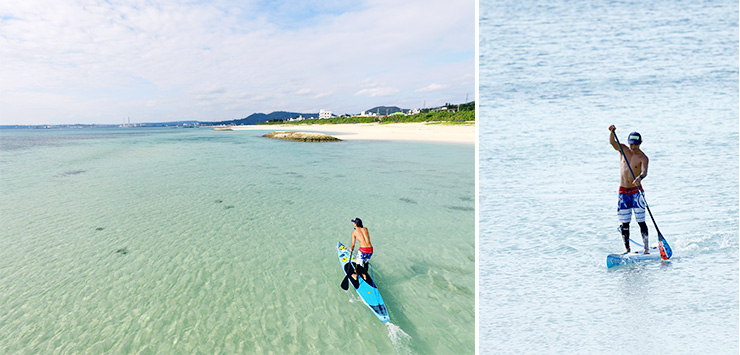
OKSUP the best choice for beginners
If you want to start enjoying SUP, then enquiring at a SUP shop will be your quickest and most reliable option. There is a group called the Okinawa Stand Up Paddle Board Federation (OKSUP), so choose a shop that is a member for peace of mind and reliability. The shops have the boards and all of the equipment, so you don’t need to bring anything. Visit the OKSUP website for details.
Okinawa Stand Up Paddle Board Federation (OKSUP)
http://www.oksup.jp/about/
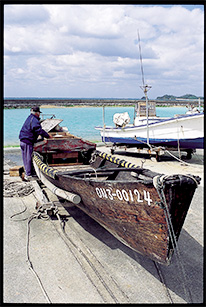
The connection between SUP and Sabani
Ryohei Yoshida, also enters Sabani-related events such as the Sabani Sailing Race every year, and has quite a few victories to his name. He describes the connection between SUP and the Sabani traditional Okinawan fishing boat as follows:
Sabani are part of the lifestyle for Uminchu (fishermen), so skill in handling a boat is directly connected to their livelihood. They understand the ocean, feel the wind and waves, and have blended that with paddling. That’s how they sailed – by handling their boats in tune with nature. That kind of intuition and technique translates well to SUP. So in that sense, you could say that Okinawa has always had a cultural foundation for the spread of SUP.



